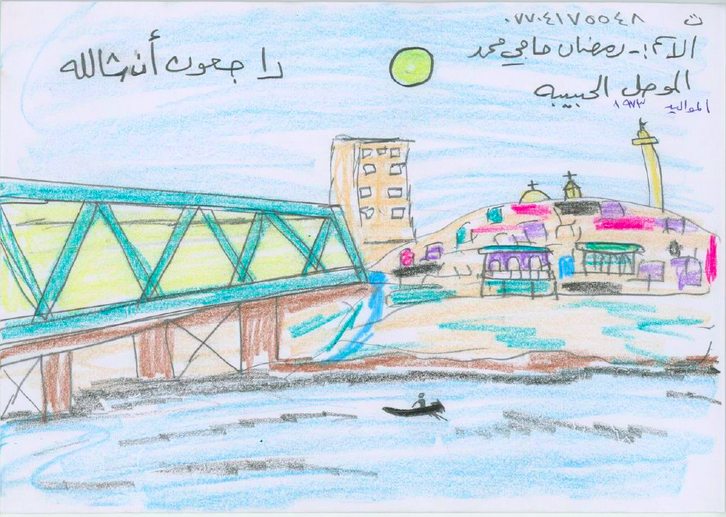Creativity for Survival
The recent history of Iraq is marked most outstandingly, by tragedy. War, invasion, occupation and inner conflict have displaced thousands of people and cost countless lives. But in addition to the horrific effects on personal fates and social structures, the recent history of violence also left it’s marks on the milleniums-old cultural heritage of the country.

The Baghdad based Ruya foundation has declared it’s aim to „promote culture in Iraq at a time when priorities are focused elsewhere“. Ruya was founded in 2012 by author and historian Tamara Chalabi, advocate Reem Shather-Kubba and investment manager Shwan Ibrahim Taha and is a non-profit NGO focused on contemporary culture. They promote and support young Iraqi artists, who often have very limited access to the international art scene, providing funds and exhibitions.
In December 2014 Ruya launched a campaign to provide drawing materials to adult men and women in refugee camps. Ruya visited Camp Shariya, Camp Baharka and Mar Elia Camp and over five days the Foundation collected 546 submissions, including drawings, poetry and prose, all of which were on display this year on the Venice Biennial at the Iraqi pavillion.

The Ruya foundation is now setting up a permanent art space in Camp Shariya in northern Iraq, which will facilitate adult refugees engaging in art through a program of talks, classes, and workshops led by a range of local and international artists including Alÿs, whose work has dealt with spatial justice and land-based poetics.
The artist Francis Alÿs will stage 2016 workshops at the refugee camp as part of the project Creativity for Survival: Art Workshops in Refugee Camps in Iraq. The foundation is setting up a permanent art space in Camp Shariya in northern Iraq, which will facilitate adult refugees engaging in art through a program of talks, classes, and workshops led by a range of local and international artists including Alÿs, whose work has dealt with spatial justice and land-based poetics.
The idea behind the program is to provide art therapy for those in the camp to assist them in emotionally dealing with their situation, and potentially draw attention to the plight of those in the camp with artistic talent.
Already in 2011 Alÿs did a performance and a movie project in Kabul, Afghanistan in the frame of documenta and with the support of the Goethe-Institut. The action took place along the bare cityscape of Kabul. The cameras follow a reel of film as it unrolls through the old part of town—pushed by two children, uphill and downhill, like a hoop, inspiring an improvised narrative. It’s an example of “doing/undoing,” Alÿs says. And that interplay became the axiom of the film.
Reel – Unreel by Francis Alÿs, Kabul 2011
A number of images have been selected by Ai Weiwei for a major publication, Traces of Survival: Drawings by Refugees in Iraq selected by Ai Weiwei, that was published to coincide with the Iraq Pavilion at the 56th Venice Biennale.

All pieces have been printed in the publication “Traces of Survival -Drawings of Refugees in Iraq selected by Ai Weiwei“ and can be purchased online via it’s publisher Mercatorfonds Belgium.


